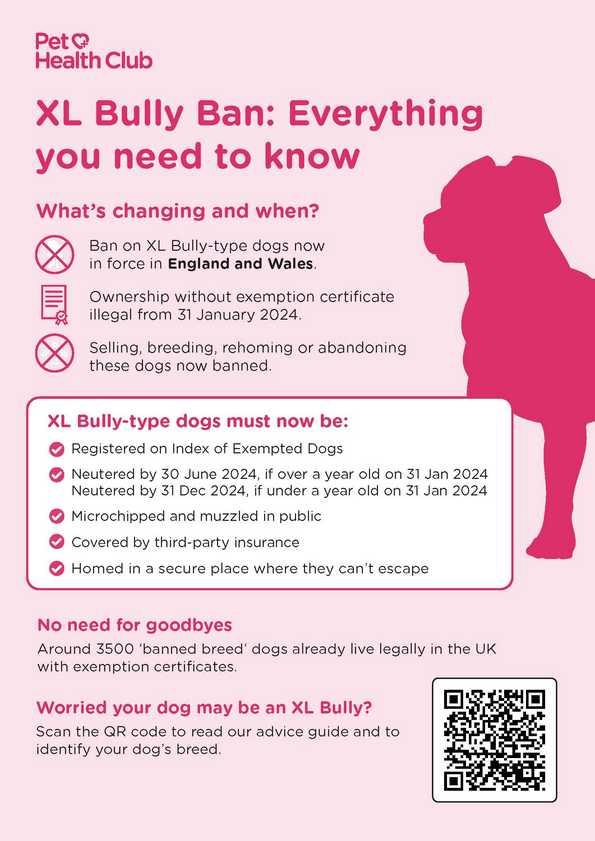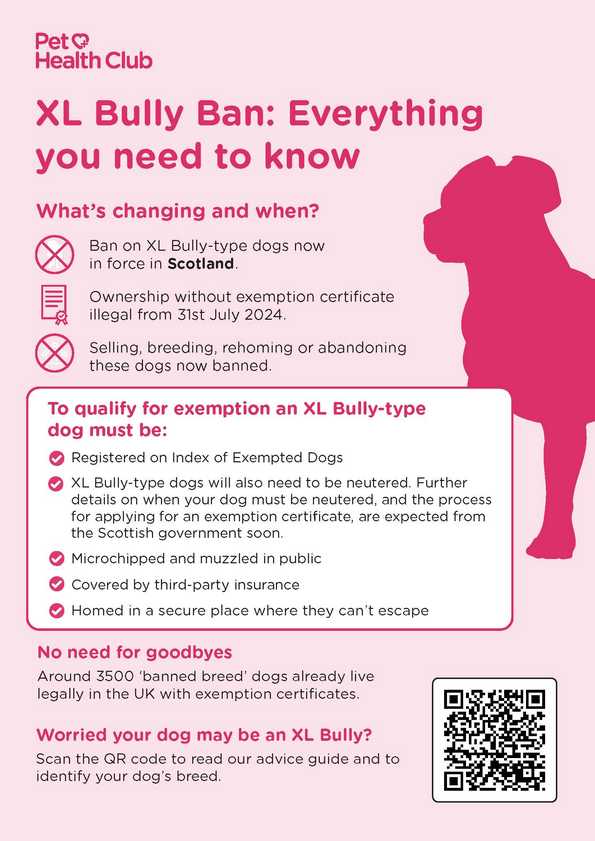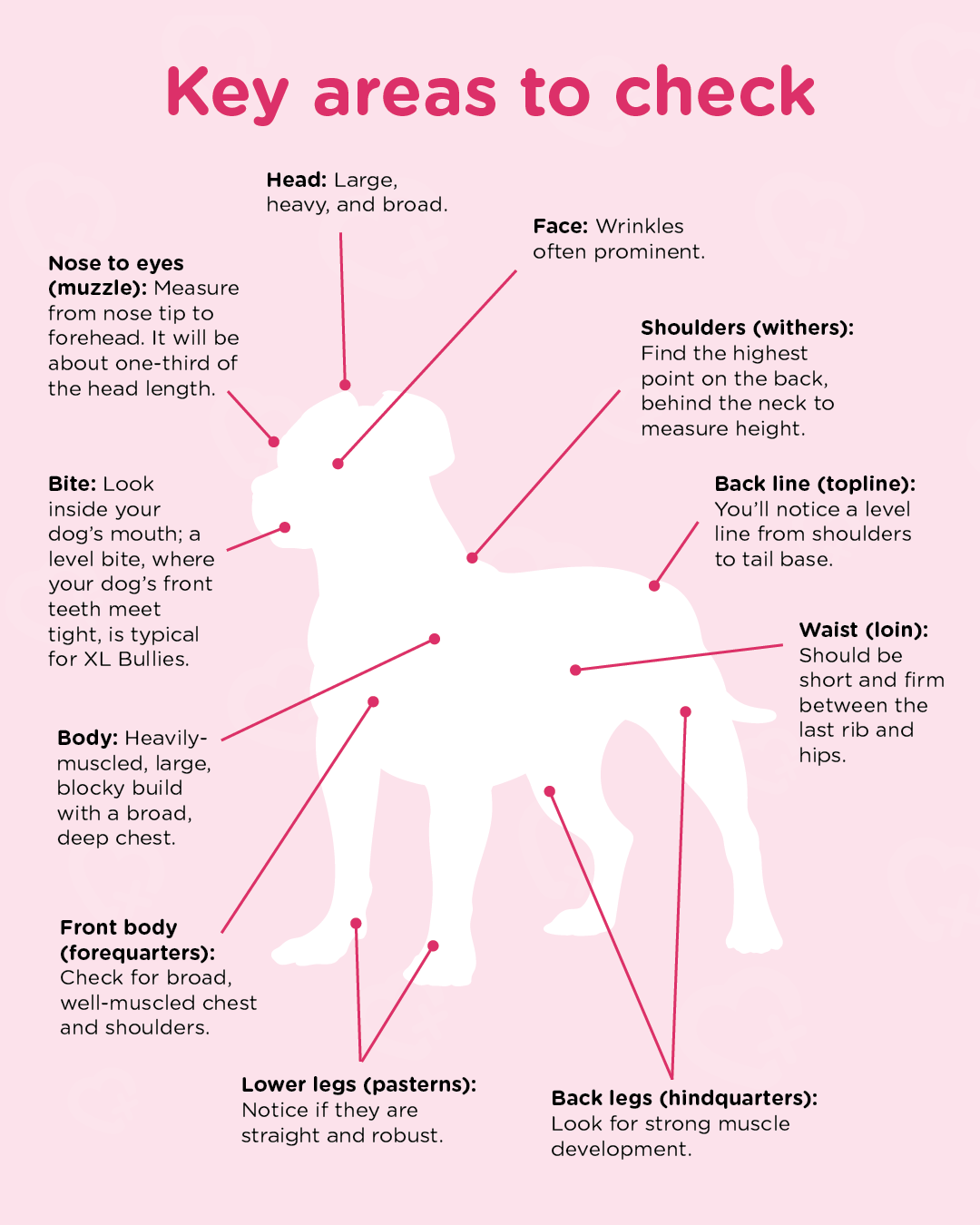XL Bully dogs: latest UK ban information
What's the situation?
XL Bully-type dogs have been officially banned in England and Wales. Starting from 1 February 2024, ownership will be illegal unless an exemption has been applied for and granted. They must also be on a lead and muzzled when in public. The law to sell, breed from, abandon, or give away an XL Bully came into force on 31 December 2023.
If an XL Bully in England or Wales is less than a year old by 31 January 2024, it needs to be neutered by the end of 2024. If older, neutering must be done by 30 June.
In Scotland, selling, breeding, abandoning or exchanging XL Bully dogs became illegal on 23 February 2024, and they must always be leashed and muzzled in public. After 31 July, you'll need an exemption certificate to own one, and breaking this law could lead to six months in jail or a fine of up to £5,000. The Scottish government has not yet released information on its exemption process or when XL Bully dogs must be neutered by, but this is expected soon.
A decision on whether to ban XL Bully dogs in Northern Ireland will be announced soon.


Does this mean that if I own an XL Bully it will have to be put to sleep?
No, the new guidance, issued by the UK government, is similar to rules for other breeds banned under the Dangerous Dogs Act 1991. The UK's chief veterinary officer clarified there wouldn't be a cull of the breed. Instead, owners can register their pets on the Index of Exempted Dogs for a fee. Almost 3500 banned dogs live legally with owners in the UK under this scheme. Before a dog can be exempted, requirements like neutering, micro-chipping, and third-party insurance must be met. The dog must also be on a lead and muzzled in public.
Is it illegal to own an XL Bully?
Since February 1, it is now illegal to own an XL Bully in England and Wales unless you have an exemption as detailed above. The same law will apply in Scotland from 31 July. The Dangerous Dogs Act allows the government to ban breeds bred for fighting. Police can seize any banned dog in public.
What is an XL Bully-type dog?
An XL Bully-type dog is a larger and more muscular variant of the wider American Bully breed. It first emerged in the US in the late 1980s, when American Pit Bull Terriers and American Staffordshire Bull Terriers were crossed. Compared to other variants of the American Bully breed, such as the 'Micro', 'Pocket', 'Standard', and 'Classic', the XL Bully is distinguished by its greater size, both in terms of height and body shape. This makes the XL Bully a standout within the Bully breed family for its physical presence. While the American Bully got recognition from the US United Kennel Club in 2013, it's not recognised by the UK Kennel Club or the American Kennel Club.
What should I do if I own an XL Bully?
If you own an XL Bully in England, Wales or Scotland your dog should now be neutered, microchipped and muzzled in public places. Therefore, you can prepare by ensuring your dog is neutered, microchipped, and trained to wear a muzzle. You must also obtain third-party liability insurance, which is available at a reasonable cost to members of the Dogs Trust.
Owners in England and Wales should have already applied for an exemption certificate as the deadline has now passed. When the exemption scheme opens in Scotland, you'll need to apply for a Certificate of Exemption to keep your dog and comply with rules around banned breed types.
How do I know if my dog is classed as an XL Bully?
Worried about your dog being classified as an XL Bully under these new regulations? Our guide helps you determine and size up the breed's main characteristics. Learn what you need to do to make sure your dog continues to be a lawful part of your household.
What are the rules for exempt dogs?
Under the current legislation, exempt dogs must be neutered, microchipped, kept on a lead and muzzled at all times when in public, and kept in a secure place so they can't escape. Owners must have third-party liability insurance, be over 16, and show the certificate of exemption when asked by a police officer or council dog warden.
What about other banned breeds?
The Dangerous Dogs Act 1991 already bans the Pit Bull Terrier, Japanese Tosa, Dogo Argentino, and Fila Brasileiro. Backing, selling, giving away, or abandoning these types of dogs is illegal.
Are other large breeds like the Cane Corso and Presa Canaria included in the ban?
The government is aware that banning XL bullies may result in other breeds, such as the Cane Corso or Presa Canaria, becoming fashionable, and they are considering what to do in those circumstances. But it’s possible other breeds and crosses between these breeds may be covered in the future.






